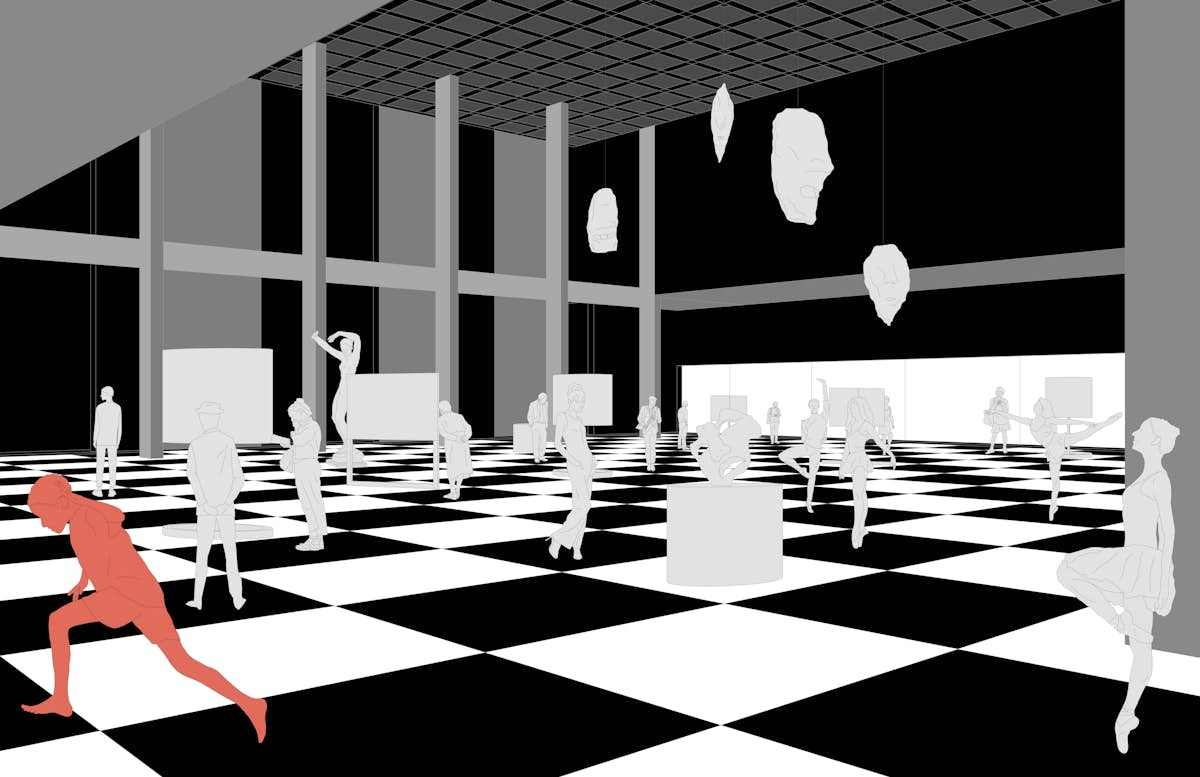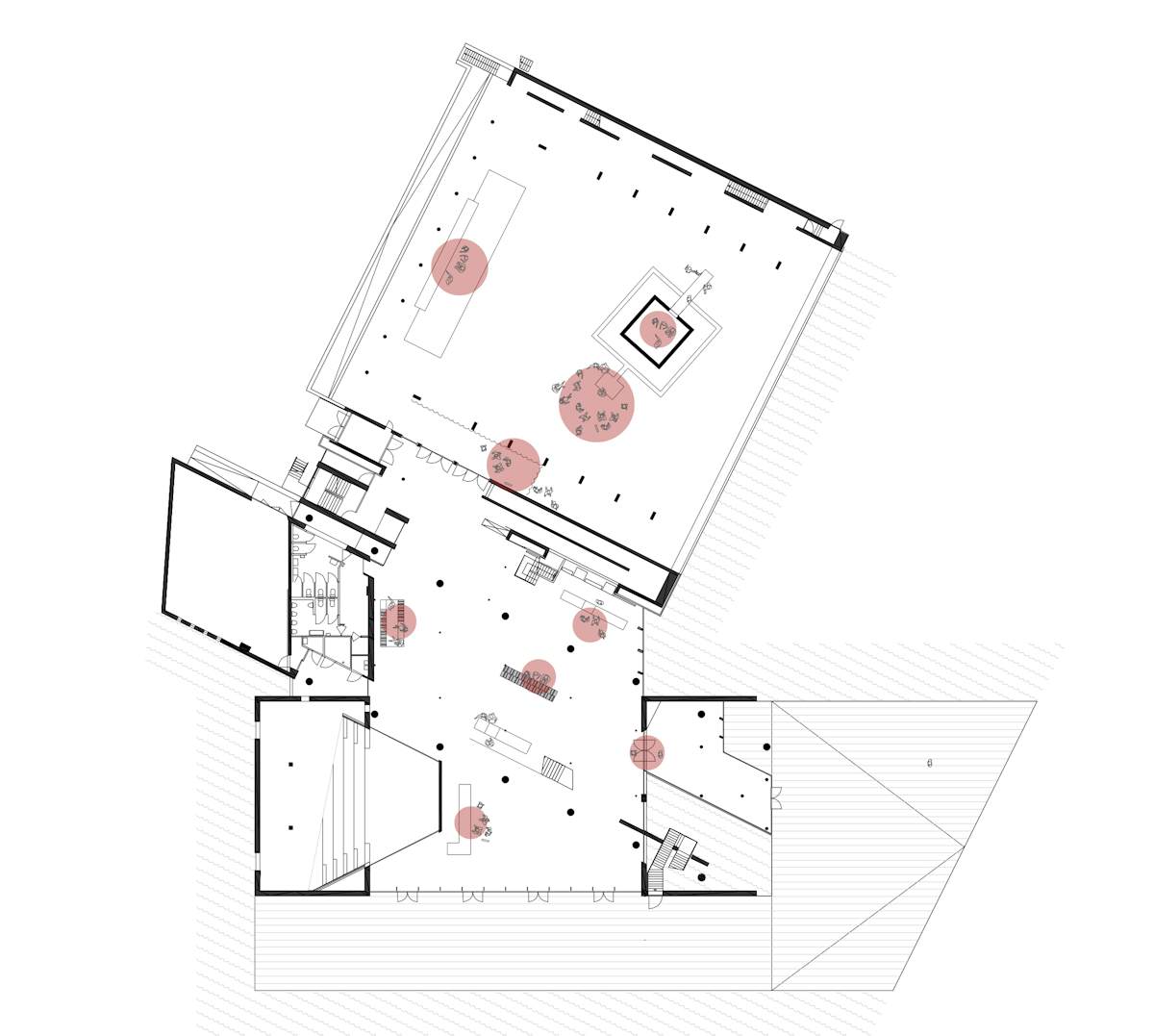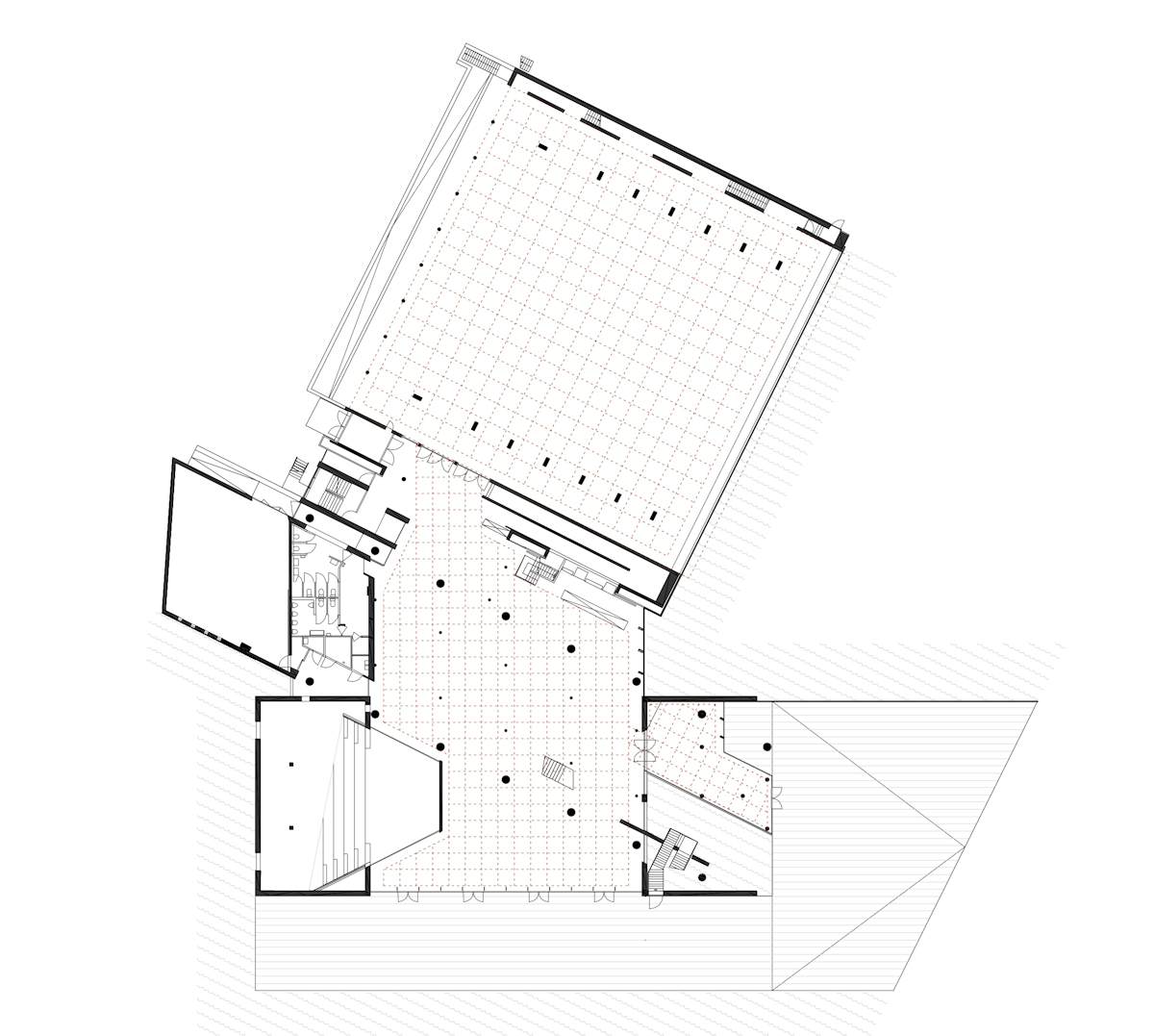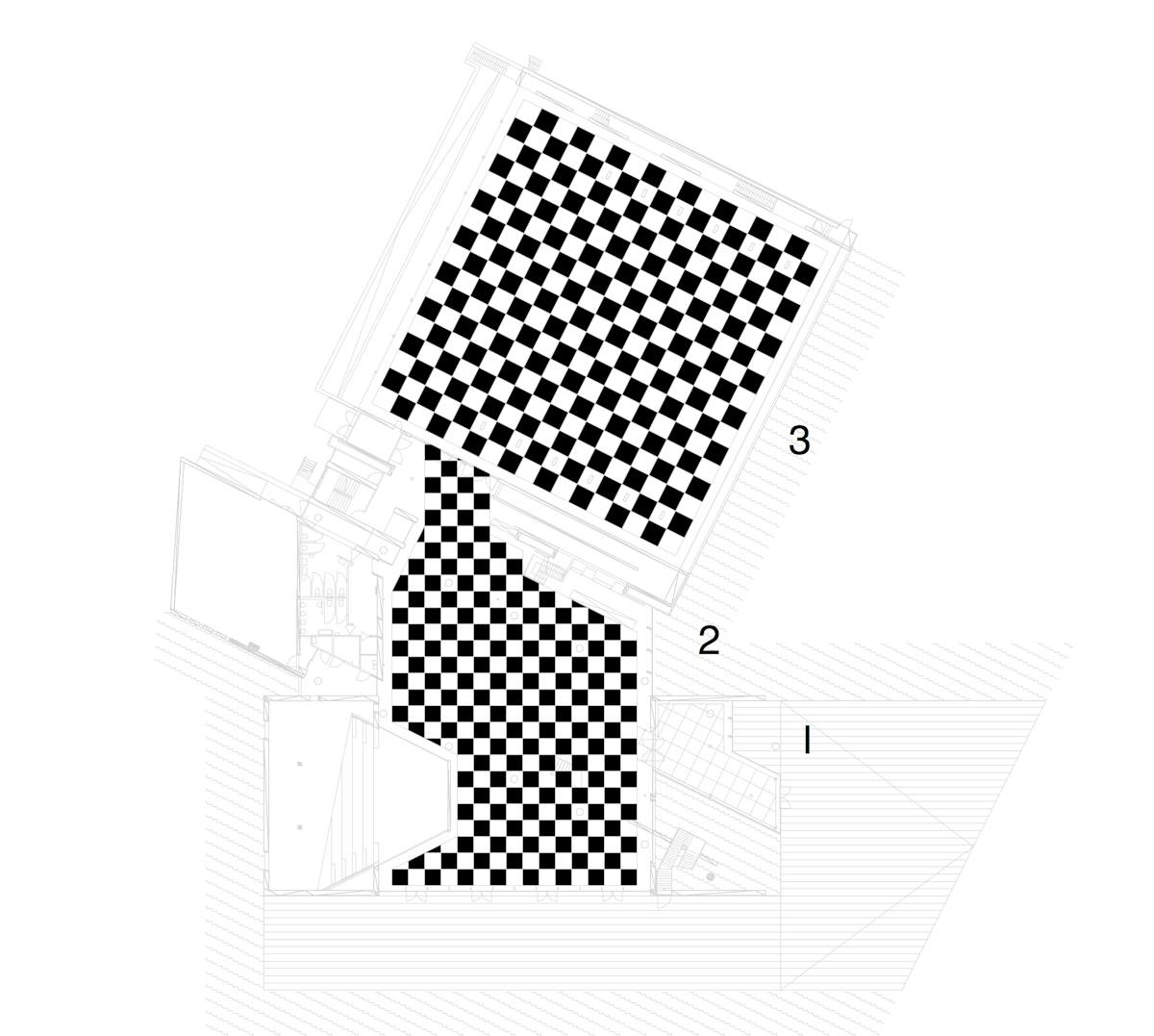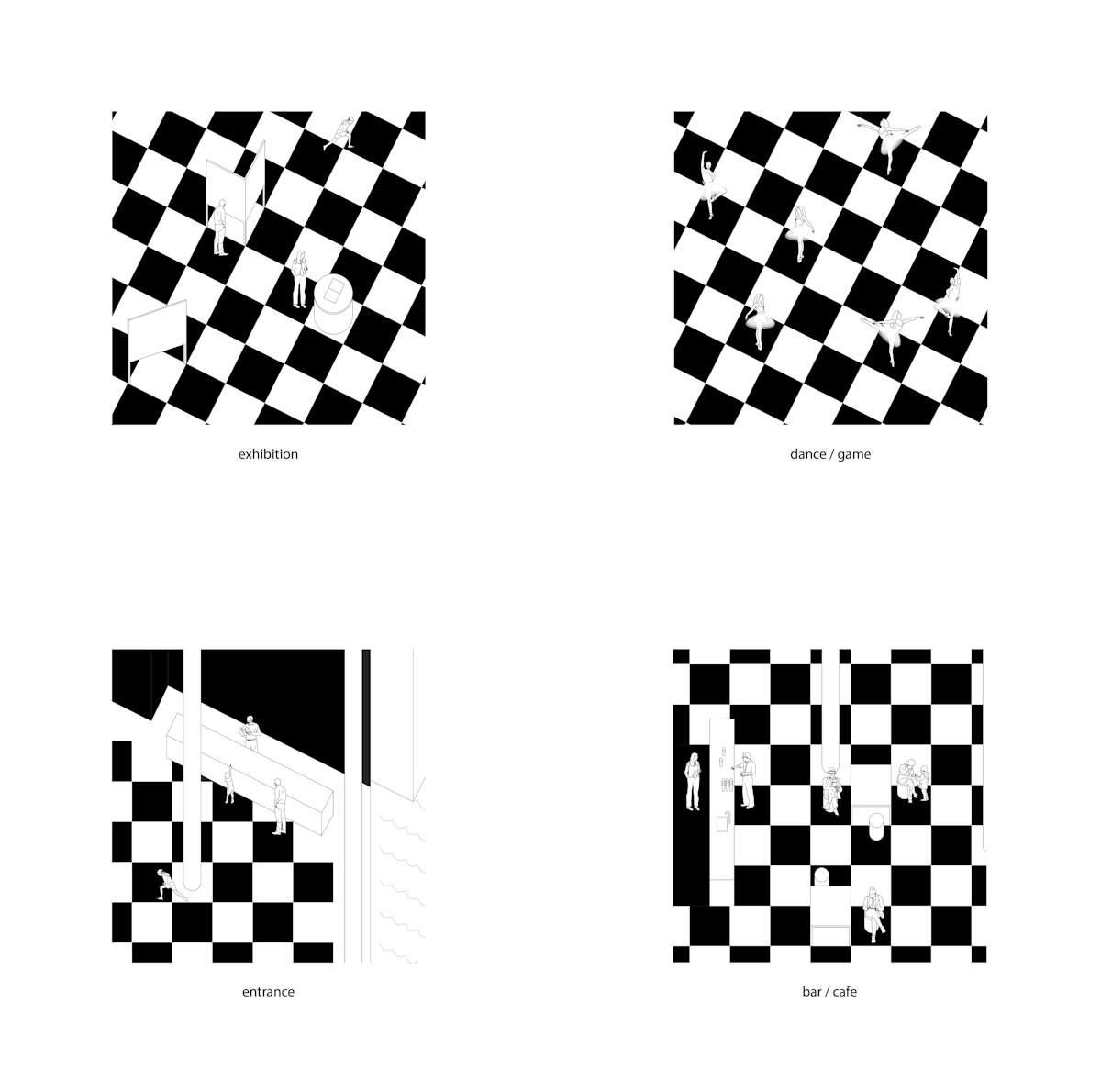DRAUGHTSMAN
a social distancing spatial agenda for cultural institutions
1.SOCIAL DISTANCING METHODOLOGY
The theme ‘social distancing spatial agenda’ suggests three aspects about our contemporary urban condition.
First, that social distancing measures have become
omnipresent and are an applied strategy to minimialise the transmissive impact of the virus.
Traditional conceptions of the public space of the city fail to function within the measures, therefore we saw the inescapable shutdown of cultural institutions and the reduction to minimum any social activity by the time when the outburst of the epidemic appeared.
Secondly, although the first wave of measures resulted in an abrupt change of perception, consequently, the semi temporal state of the situation that we soon arriving to, invites adaptations that allow rethinking of the measures for functioning of cultural institutions.
Third, the public space is an ambient condition which we analyze and which is currently necessitated to be adjusted for effectively foreseeing a controlled way of using it, an essay at finding the middle way between introduced measures and the desire reopen and to keep cultural space active.
Can we regain control over the functioning of cultural institutions?
Can we use collective knowledge for finding innovative and flexible solutions?
Can we effectively intervene to adjust inequities in density of use without increasing the risk of transmission of the virus?
2.SOCIAL DISTANCING = SPATIAL AGENDA
Spatial occupation by people in cities, by how we perceive it, is boundless, and surely not equal or homogenous. High and low density dynamic create disparities and places of concentration of people, potentially problematic in the contemporary perception of space that aim to tackle the current widespread. Can a spatial intervention have influence on these disparities and create a convincing modus operandi for the redistribution of use within a public institution?
3.DRAUGHTSMAN:
A.To come in dialogue with the form of the building and the structural plan of its parts
B.To reflect on a new wave of public coexistence in the times of social distancing restraints C.To propose a new civic form of moving within public space
Epidemics is something that stops our individualistic use of space, but is at the same time something that encourage to create new spatial agenda. It erases our basic way of cohabiting spaces, but is at the same time something that creates moments of description of space.
draughtsman / dammer is a clear division of space, a common ground floor suggesting areas of circulation and a way to approach objects of the exhibition, reception, bookshelf, ticket desk, bar or tables.
Together the space forms a large checkerboard floor, that becomes a new operator of collectivity in the times of spatial distancing. It is a ground that takes the rules of international draughts, a new form of occupying the space, forming a working method, a middle between the activity of cultural spaces and the reality of lockdown.
4.RULES
The draughtsman/dammer facilitates this measures as in draughts game, with few simple rules :
+only the dark squares are in use
+a move consists of moving diagonally to an adjacent unoccupied square
+white squares are used only for equipping the space
+aim of the game - effective use of the space with social distancing measures
We can recognize three volumes with different characteristics for learning the rules of the game:
-1.entrance space - initiation, entering one by one and finding out the rules of the space
-2.functional space - the irregular shape of the floor reflects its multifunctional character, practising rules of the space and operating throughout it
-3.exhibition space - visitor recognize e conjunction of application of the given measures to the use of the space, like a draughtsman in draughts, in an exhibition or in an performative stage of action.
MD-2 Architects
